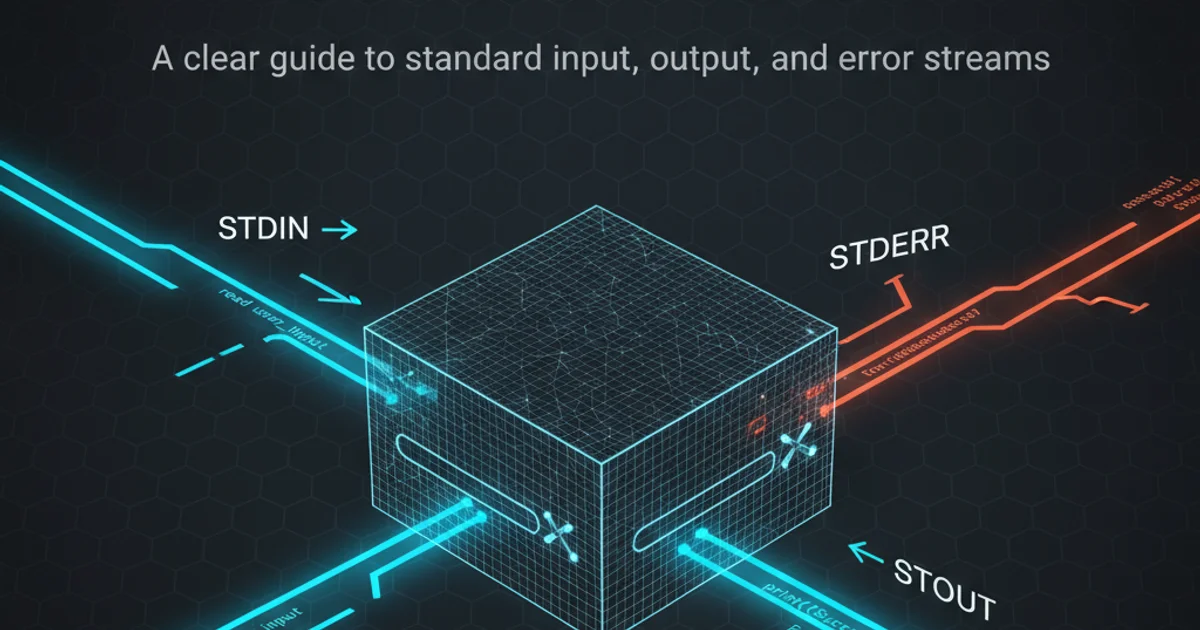Is there a shorter way to write a for loop in Java?
Categories:
Shorter For Loops in Java: Exploring Enhanced Syntax and Streams

Discover concise and efficient ways to write for loops in Java, from the enhanced for-each loop to powerful Stream API constructs, improving code readability and reducing boilerplate.
Java offers several ways to iterate over collections and arrays. While the traditional for loop provides maximum control, it can sometimes be verbose. This article explores shorter, more expressive alternatives that can make your Java code cleaner and more readable, focusing on the enhanced for-each loop and the Stream API.
The Traditional For Loop: A Foundation
Before diving into shorter alternatives, it's important to understand the traditional for loop. This construct is fundamental for iterating a specific number of times or when you need explicit control over the index or iteration conditions. It consists of an initialization, a termination condition, and an increment/decrement statement.
List<String> names = Arrays.asList("Alice", "Bob", "Charlie");
for (int i = 0; i < names.size(); i++) {
System.out.println(names.get(i));
}
Traditional for loop iterating over a List
Enhanced For-Each Loop: Simplicity for Collections
Introduced in Java 5, the enhanced for-each loop (also known as the 'for-each' loop) provides a simpler syntax for iterating over arrays and objects that implement the Iterable interface (like List, Set, Queue). It abstracts away the index management, making the code less error-prone and more readable when you only need to access the elements themselves, not their positions.
List<String> names = Arrays.asList("Alice", "Bob", "Charlie");
for (String name : names) {
System.out.println(name);
}
Enhanced for-each loop for iterating over a List
for-each loop whenever you don't need the index of the current element. It significantly improves readability and reduces the chance of off-by-one errors.Stream API: Functional and Concise Iteration (Java 8+)
Java 8 introduced the Stream API, offering a powerful and functional approach to process collections of data. Streams allow you to perform operations like filtering, mapping, and reducing in a declarative and often more concise manner. While not strictly a 'loop' in the traditional sense, stream operations often replace multi-line loops with single-line expressions.
List<String> names = Arrays.asList("Alice", "Bob", "Charlie");
names.stream()
.filter(name -> name.startsWith("A"))
.forEach(System.out::println);
Using Stream API to filter and print elements
flowchart TD
A[Collection] --> B{Stream()};
B --> C{Intermediate Operations (e.g., filter(), map())};
C --> D{Terminal Operation (e.g., forEach(), collect())};
D --> E[Result];Basic flow of Stream API operations
Choosing the Right Approach
The 'shortest' way isn't always the 'best' way. The choice depends on your specific needs:
- Traditional
forloop: When you need explicit control over the index, iteration count, or need to modify the collection during iteration (with caution). - Enhanced
for-eachloop: For simple iteration over collections and arrays where the index is not required. It's generally the most readable option for this use case. - Stream API: For complex data processing, transformations, filtering, and when you want to leverage functional programming paradigms. It can be incredibly concise for multi-step operations.
for-each loop or Stream API can lead to ConcurrentModificationException. Use an Iterator or a traditional for loop if modifications are necessary during iteration.By understanding these different iteration constructs, you can write more efficient, readable, and maintainable Java code.